10 Little-Known Roman Sites That Are Actually In England
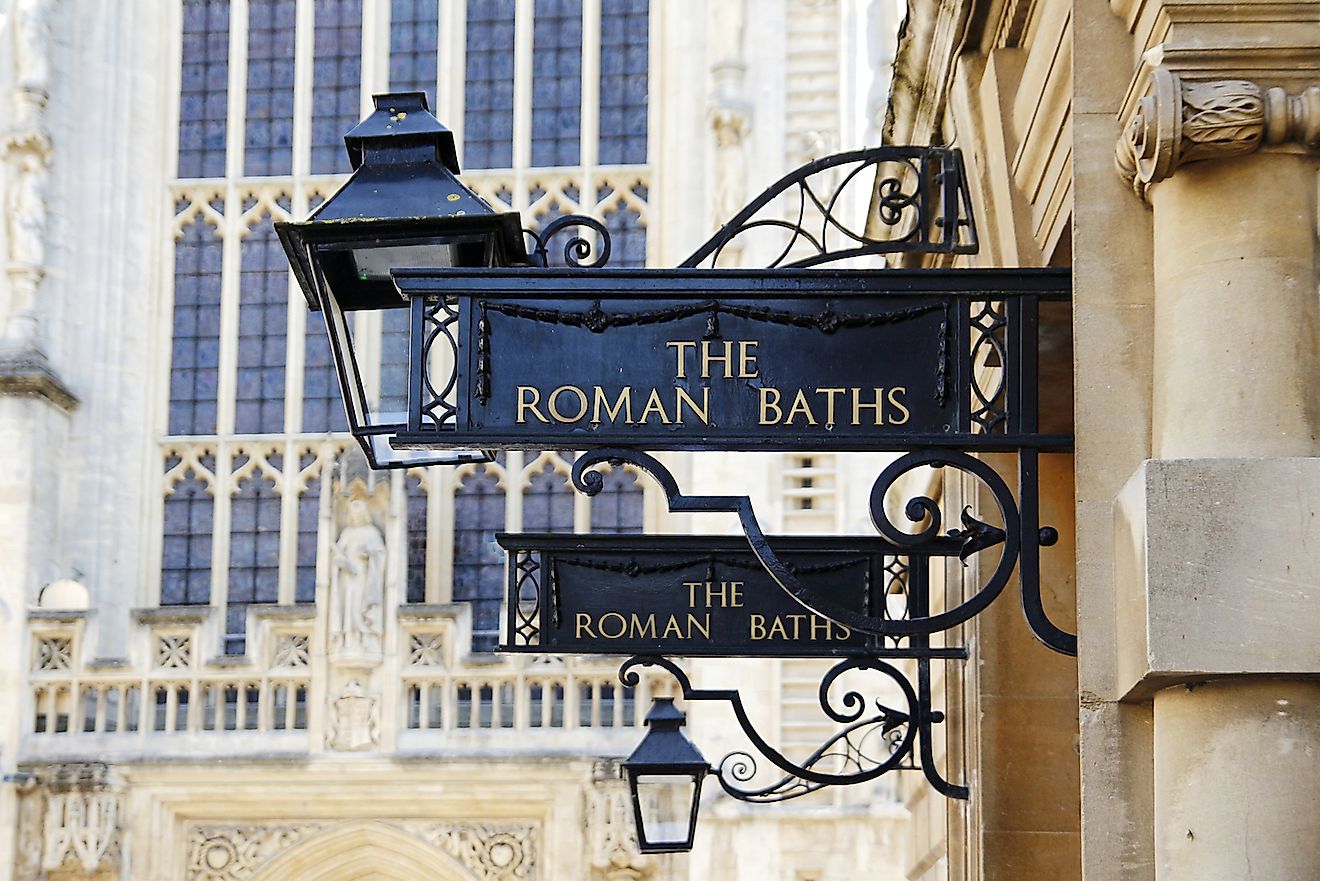
- For almost 400 years the Roman Empire ruled much of Britain. During these years they introduced their culture and built many Roman structures, some of which you can still see today.
- One of the most well-preserved Roman sites in England and probably the finest historic site in all of Great Britain, the Roman Baths, is an ancient thermal spa complex that was used by the Romans for rest or relaxation.
- Also known as the London Mithraeum, the Temple of Mitras is a Roman Mithraeum discovered during the post-war reconstruction of London in the 50s.
- The Chester Roman Amphitheatre was the largest Roman amphitheater in all of Britain and was used for military weapons training and entertainment.
The Romans played a crucial role in England’s history. For almost 400 years the Roman Empire ruled much of Britain. It all started 2,000 years ago when the empire set their sights on the vast, unknown, mysterious island beyond the sea. Right after seizing Gaul (France) from the Celtic tribes that lived here, the Romans set out on a mission to conquer Britain and expand the empire.
Their first attempt came in 55 BC when Julius Caesar brought two Roman legions to Britain but lost. A century later in 43 AD Emperor Claudius launched a full-scale invasion of Britain along with his four legions. A battle ensued after which the Romans emerged the winner. In the next couple of centuries, the Roman Empire strengthened its foothold of Britain seizing more lands and intensifying its rule. During these years they introduced their culture and built many Roman structures, some of which you can still see today.
These days, a tour of England wouldn’t be complete without seeing any of these exquisite Roman sites that have stood witness to England’s Roman heritage. Here are just a few of the best Roman sites you can visit in England.
10. The Roman Baths
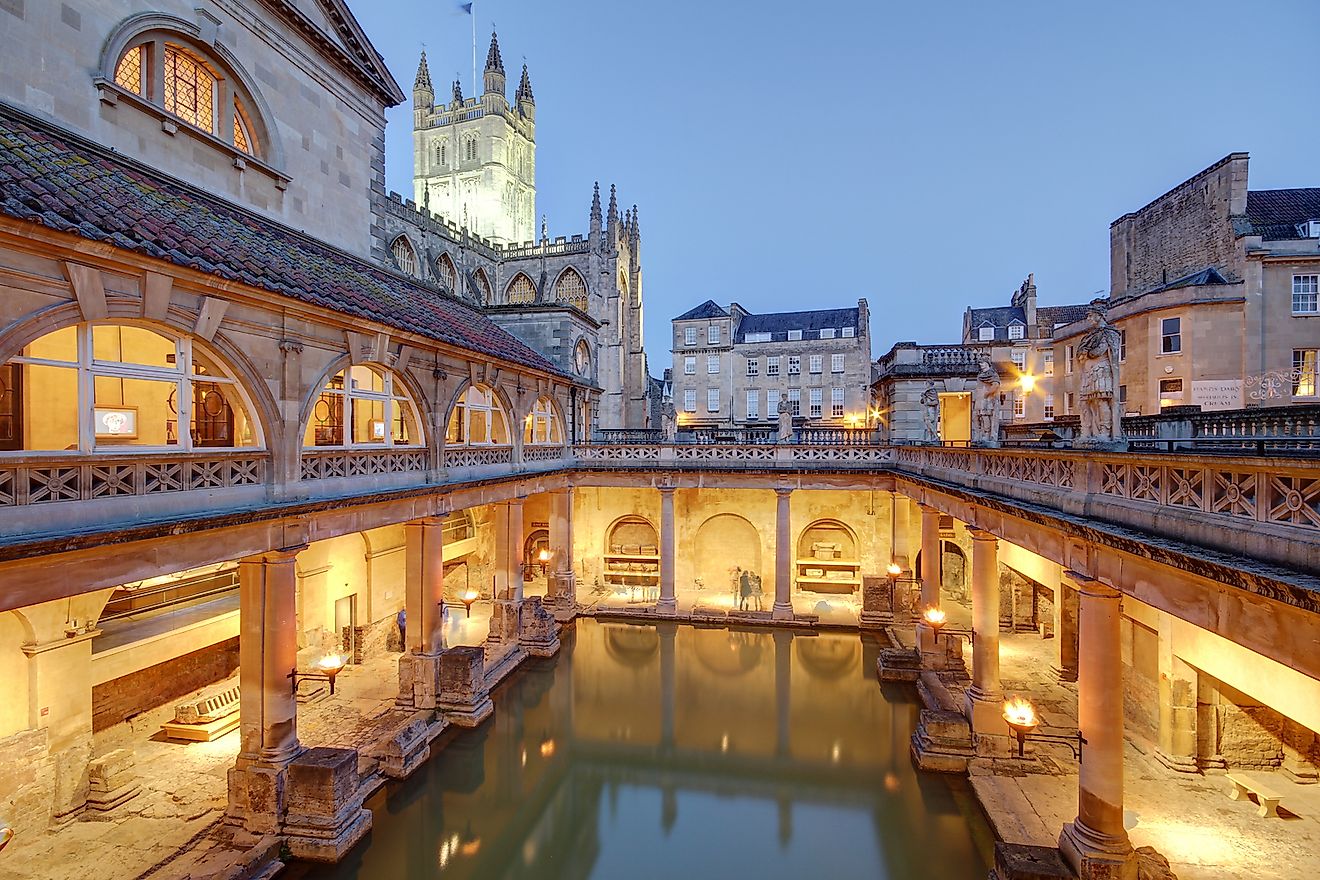
One of the most well-preserved Roman sites in England and probably the finest historic site in all of Great Britain, the Roman Baths, is an ancient thermal spa complex that was used by the Romans for rest or relaxation. Located right at the heart of Southern England, this famous thermae is now 2,000 years old. It features exquisite Roman architecture with sculptures and limestone pillars surrounding a huge pool with water that is now green due to algal growth.
9. Hadrian’s Wall
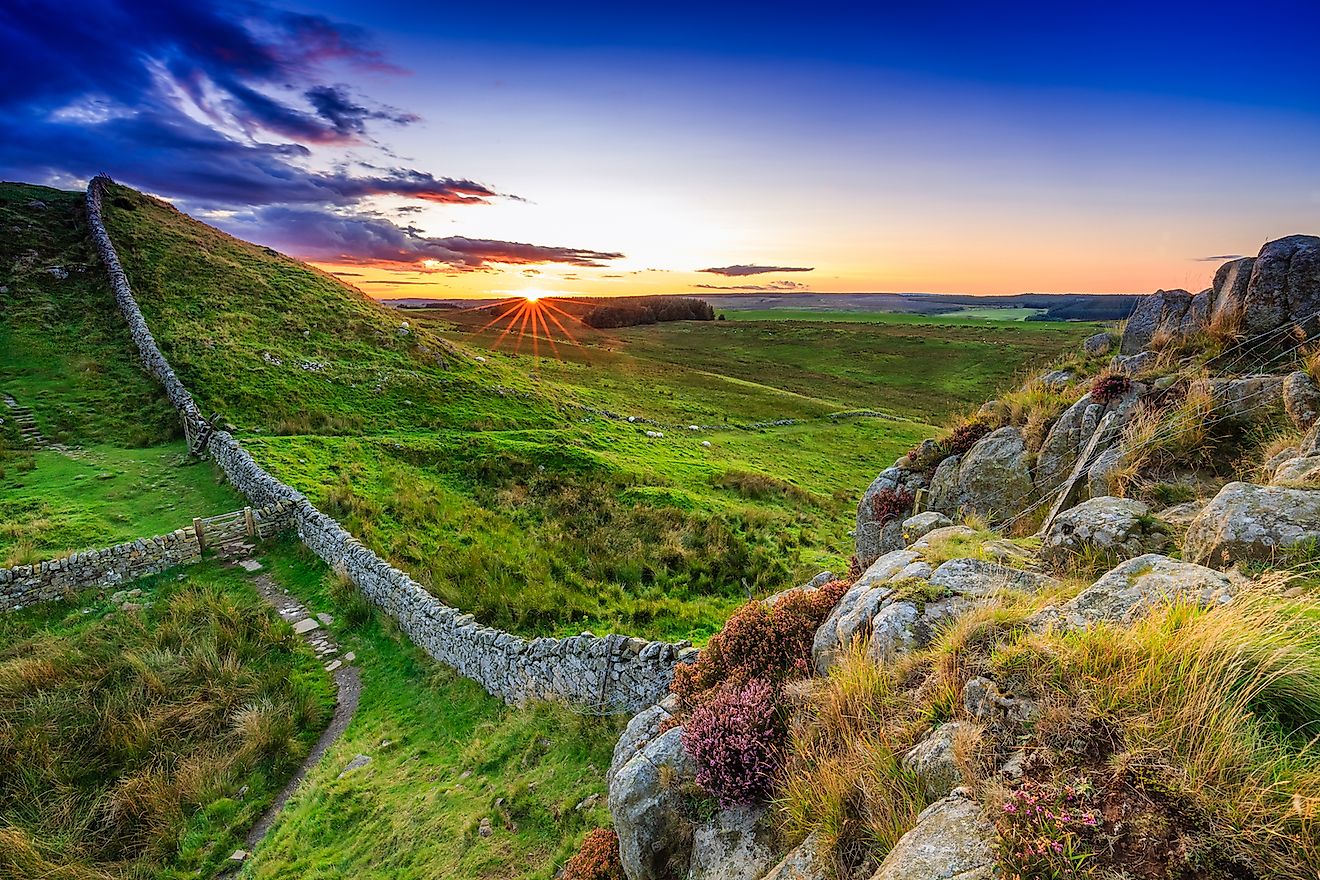
Also known as the Roman wall, this is what remains of a stone fortification built around Roman Britain to protect the empire against attacks. Located near the border of modern-day England and Scotland, the ancient wall stretches more than 70 miles and took six years to build. The entire structure and area include towers, forts, turrets, and what remains of Roman towns. This UNESCO World Heritage Site, allows visitors to walk along the wall, wander around the forts, and follow a heritage trail.
8. Wroxeter Roman City
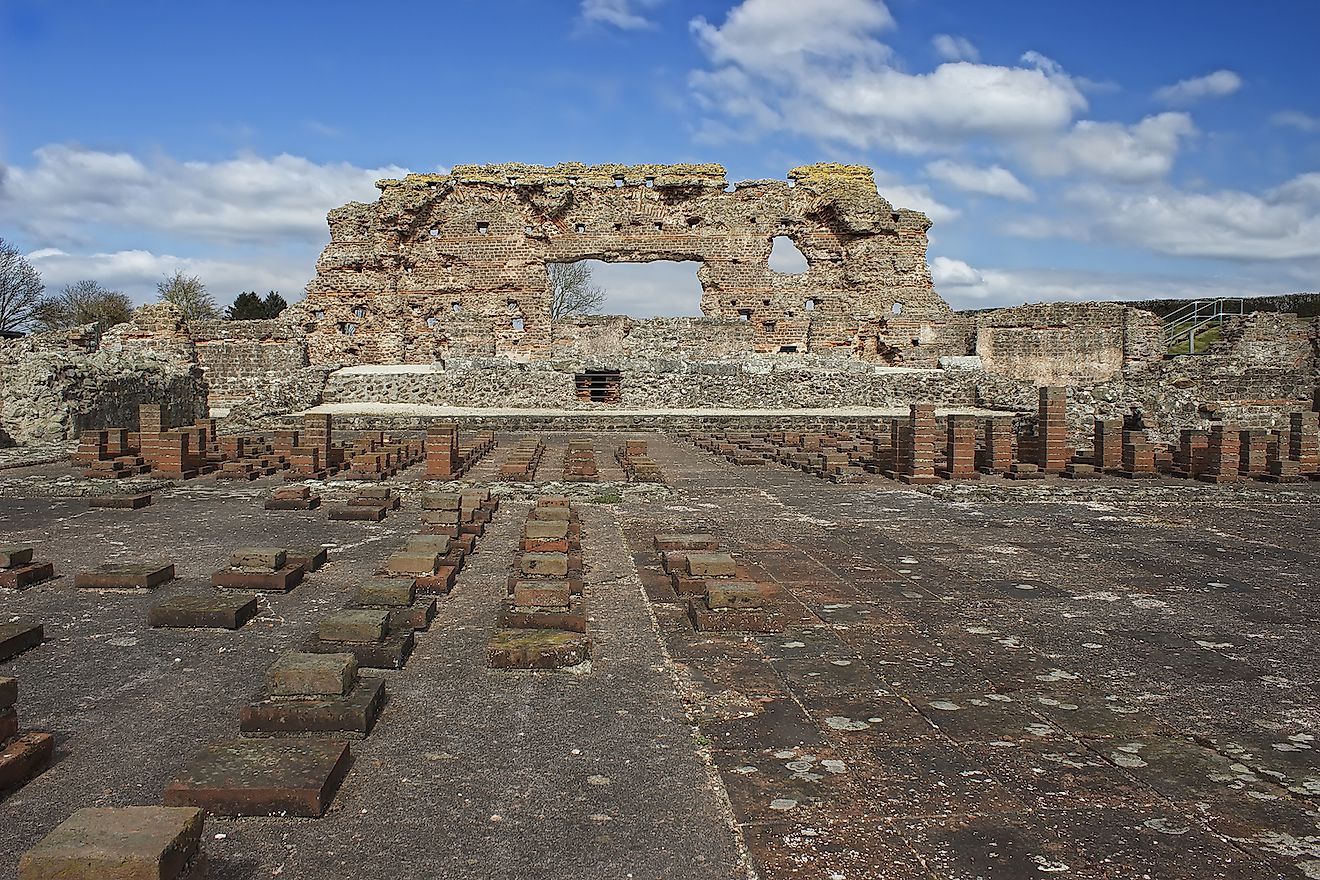
Known 2,000 years ago as the Roman city of Viriconium, Wroxeter was the fourth largest city in Roman Britain and is located in Shropshire in England. It features the remains of a once-thriving Roman village with an ancient bathhouse, a Roman townhouse, the iconic Old Work (a 7-meter high basilica wall), and the market hall where Roman bathers got their evening meal. The museum in Wroxeter showcases Roman artifacts that provide a glimpse into the lives of the people who lived there thousands of years ago.
7. Roman Vindolanda
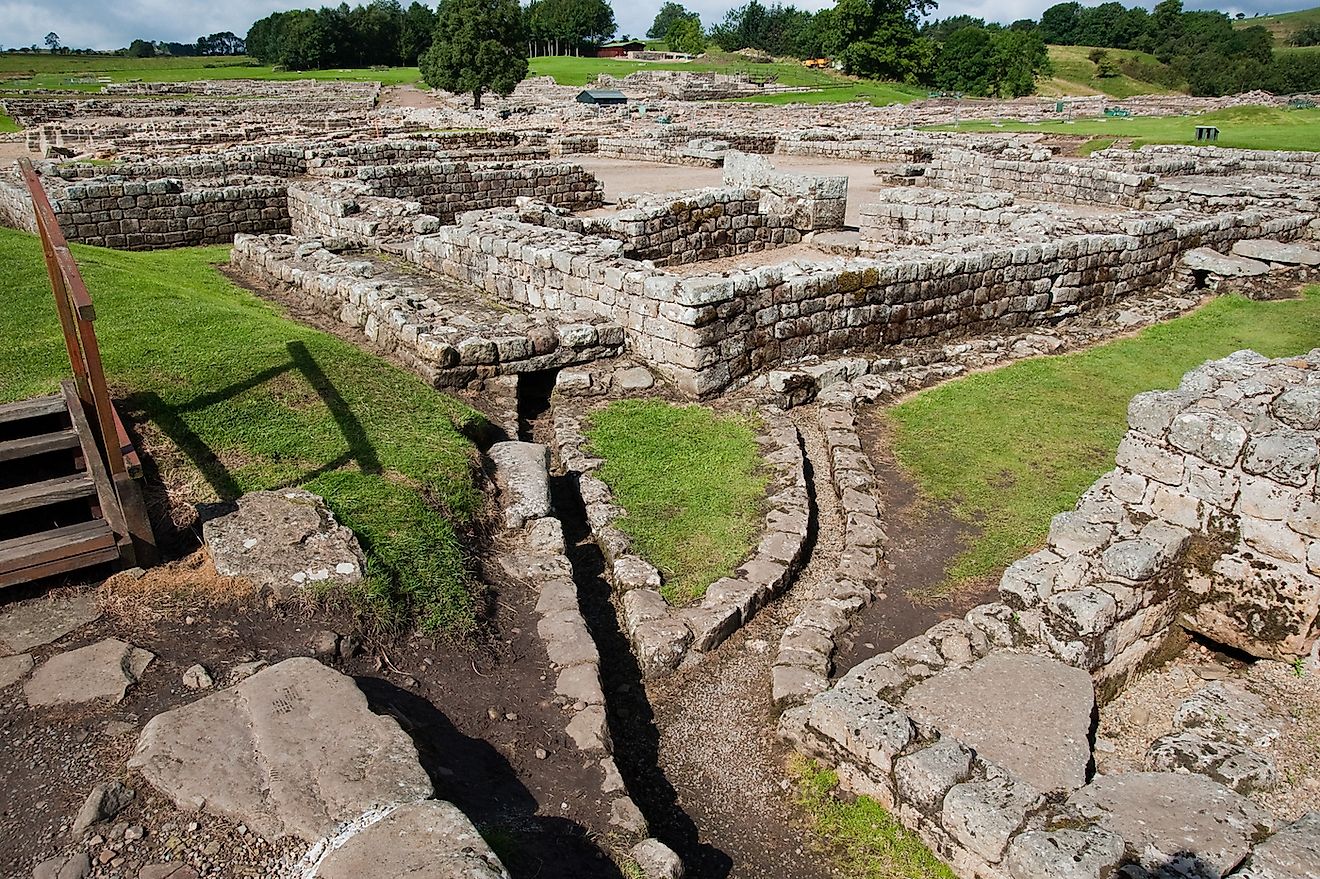
Located South of Hadrian’s Wall, the Vindolanda was built way before the famous wall and was used by the Romans as a fort and garrison base. These days you can find what remains of the fort as well as a world-class museum that houses Roman artifacts. It is home to many 2,000-year old wooden finds like an ancient toilet seat and a toy sword. But Vindolada is best known for its writing tablets considered one of Britain’s top treasures. These are thin and delicate sheets of wood with writing in ink. They’re the oldest surviving handwritten documents in Britain.
6. Fishbourne Roman Palace
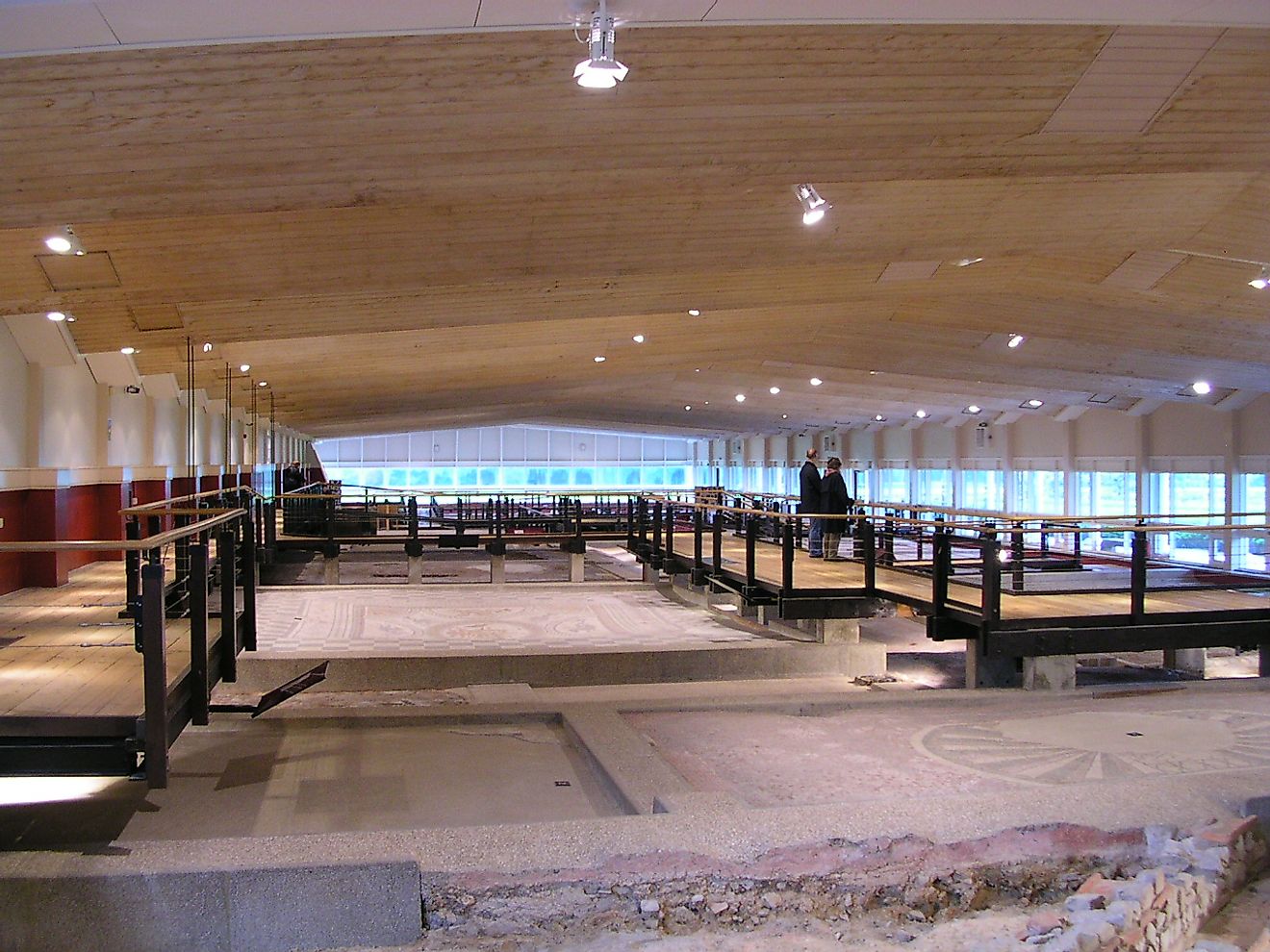
Located in West Sussex, this ancient structure is the largest residential Roman building discovered in Britain. This structure which dates back to 75 AD is a palace cum vila that houses Britain’s largest collection of Roman mosaic floors—around 20 of them—the most famous of which is the cupid on a dolphin mosaic complete with what is believed to be the artist’s signature. There are thousands of other items inside this lavish Roman villa including coins, jewelry, pottery, and sculptures.
5. Bignor Roman Villa
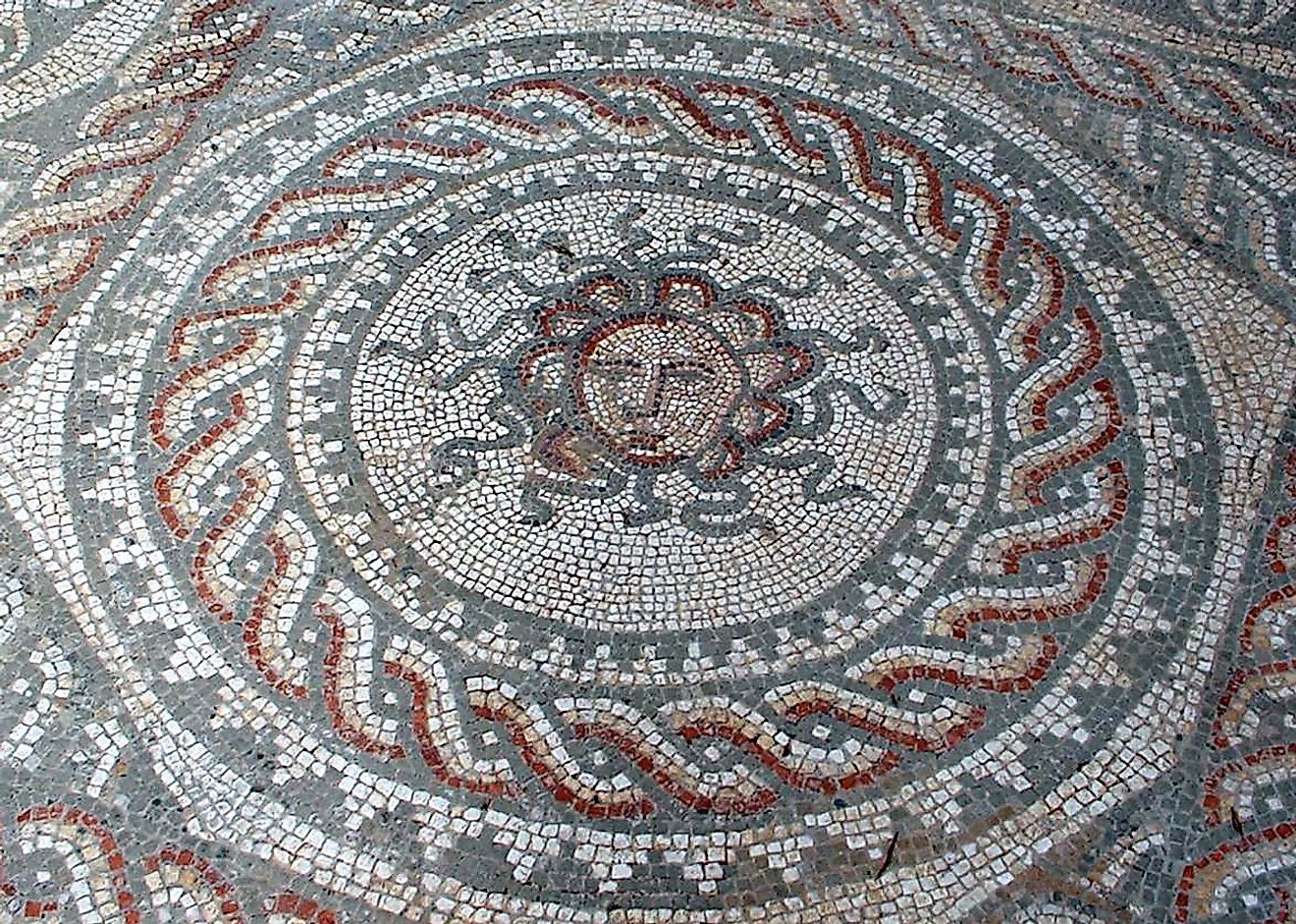
Another exquisite Roman home in England is the Bignor Roman country villa located in West Sussex. It was discovered by George Tupper in 1811 when he accidentally hit the Summer dining room water basin with his plow. Today the Tupper family still manages the ancient structure where you can still see well-preserved and detailed Roman mosaics (the most intricate and most detailed you can find in Britain) and other artifacts like a gold ring presumably from the owner who was of significant stature in the Roman empire.
4. Arbeia Roman Fort
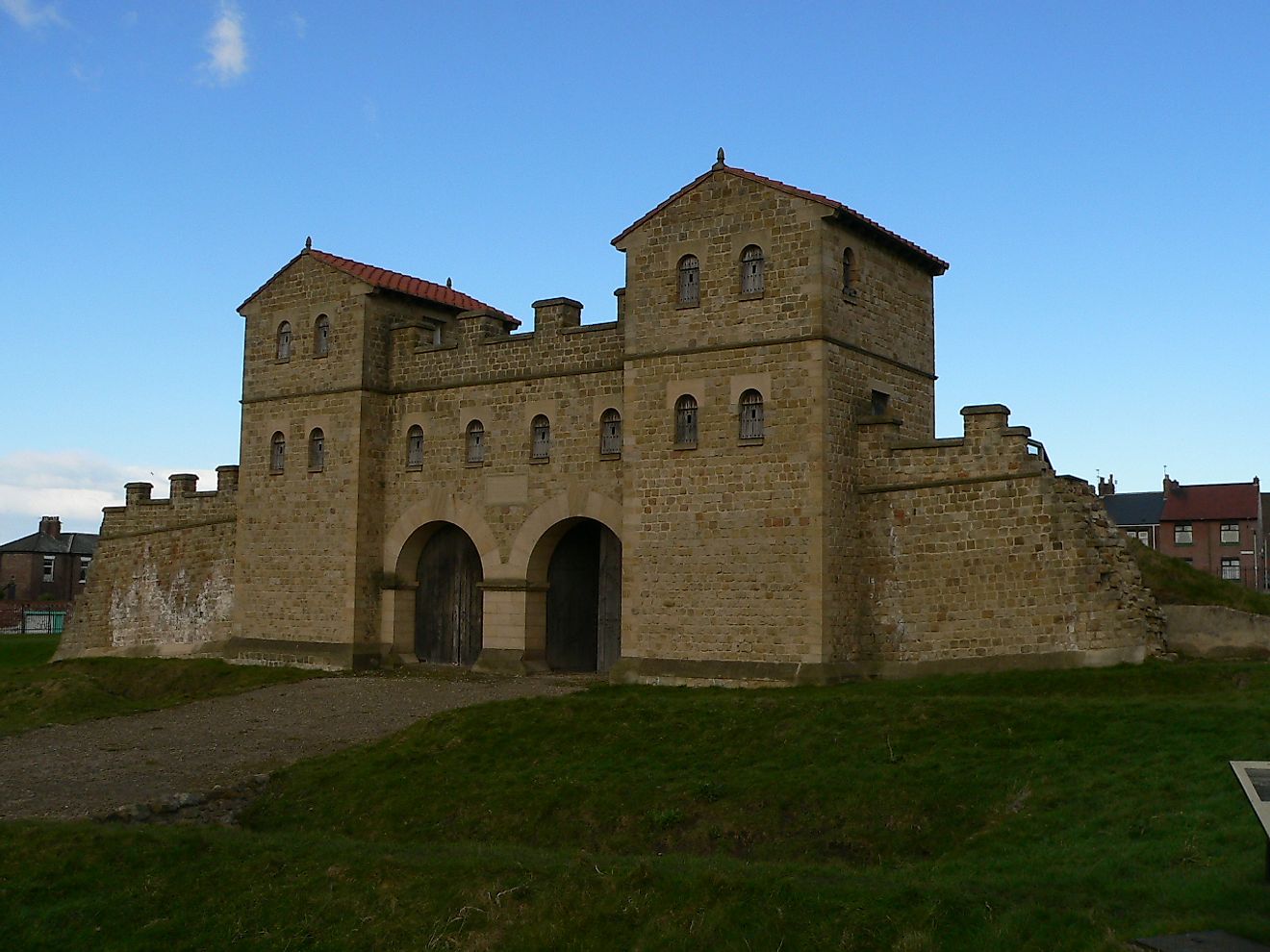
This Roman fort was built around 160 AD and was used as a garrison and military supply base. The supply base was also home to around 600 Roman soldiers that guarded the entrance to River Tyne. The area is believed to be the birthplace of the Northumbrian King Oswin. A UNESCO World Heritage site, the Arbeia Roman Fort now includes full-scale reconstructed Roman buildings like the Commanding Officer's house, the West Gate, and a soldier's barrack.
3. Temple Mitras
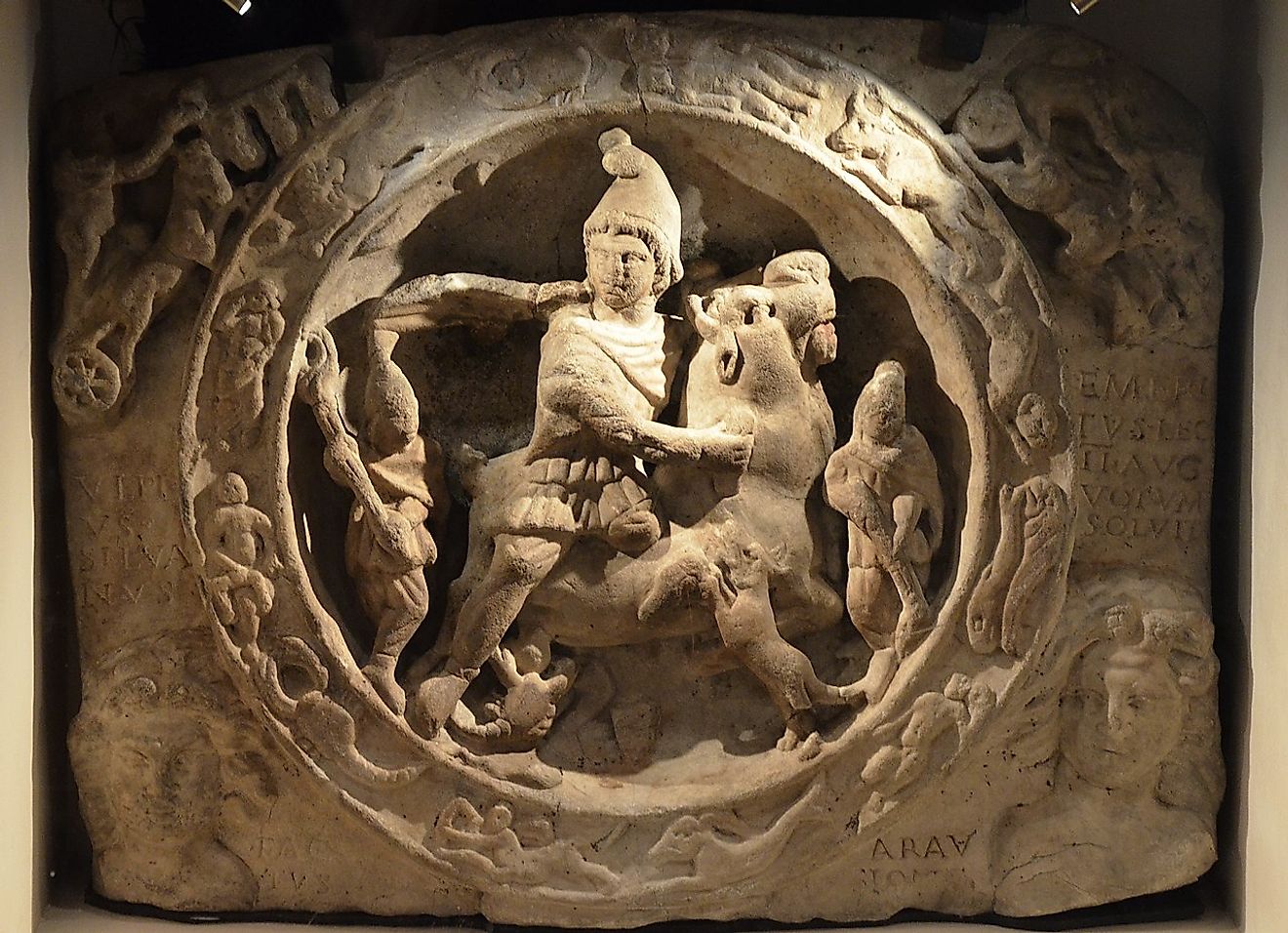
Also known as the London Mithraeum, the Temple of Mitras is a Roman Mithraeum discovered in the city of London that was built by the Romans to worship the Persian god of the rising sun Mithra. It was accidentally discovered during the post-war reconstruction of London in the 50s.
The temple was built deep into the ground in London (previously known as Londinium ) which was the capital of Roman England. Along with numerous artifacts, excavators also found the marble head of a statue of Mithras.
2. Corbridge Roman Town
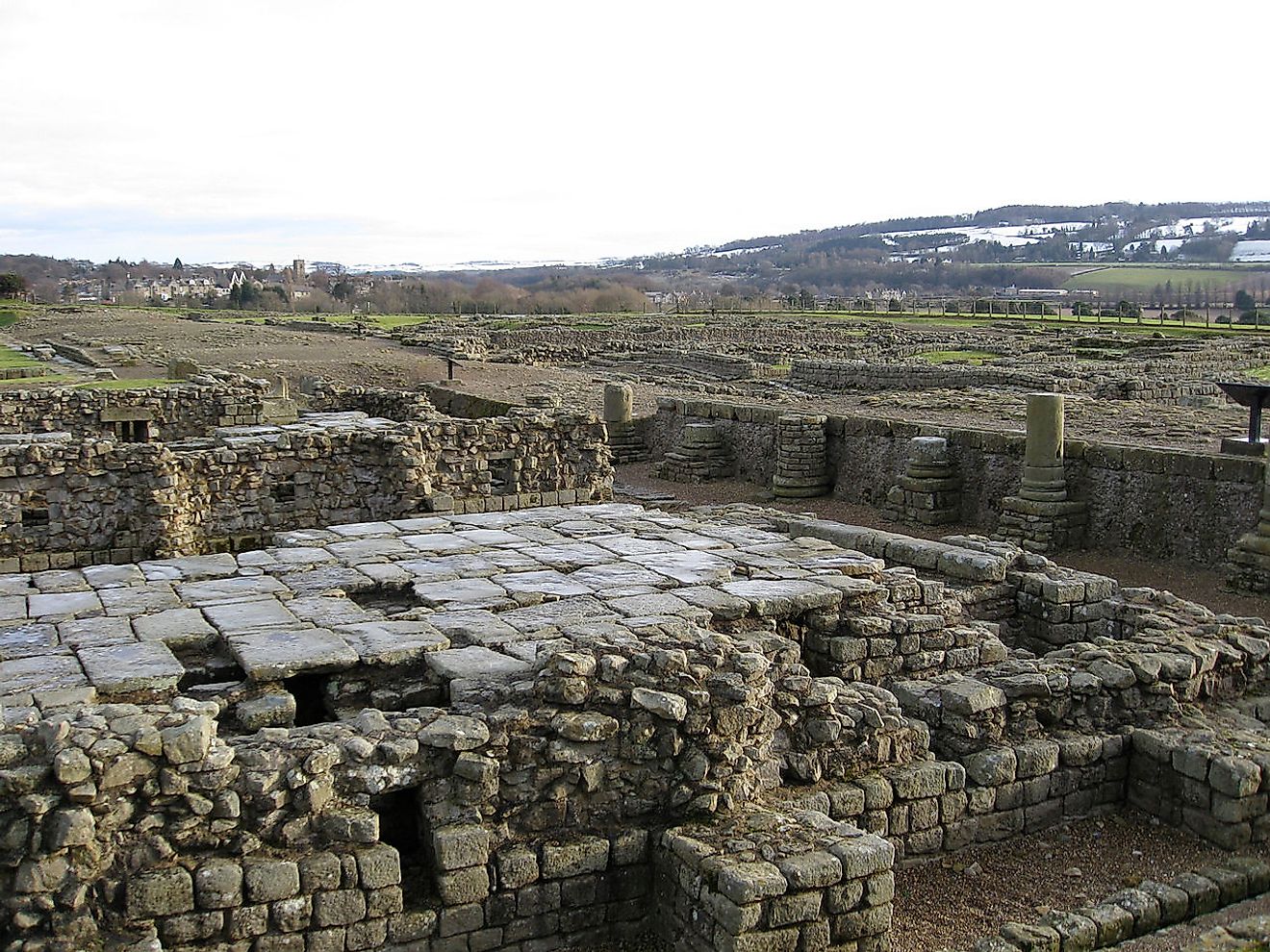
Corbridge Roman Town was a thriving garrison town located near Hadrian’s Wall. This bustling Roman village is believed to be the site where Romans picked up their food and provisions. Developed from about 160 AD to the 4th AD, the town covered around 50 acres that included granaries where they kept grains used to make bread, the main street that was lined with buildings, an aqueduct, and fountain all of which left remains you can still see today. The site now also features the remains of an unfinished Roman square which many believe was originally planned as a town square, storage, or a Roman headquarters.
1. Chester Roman Amphitheatre
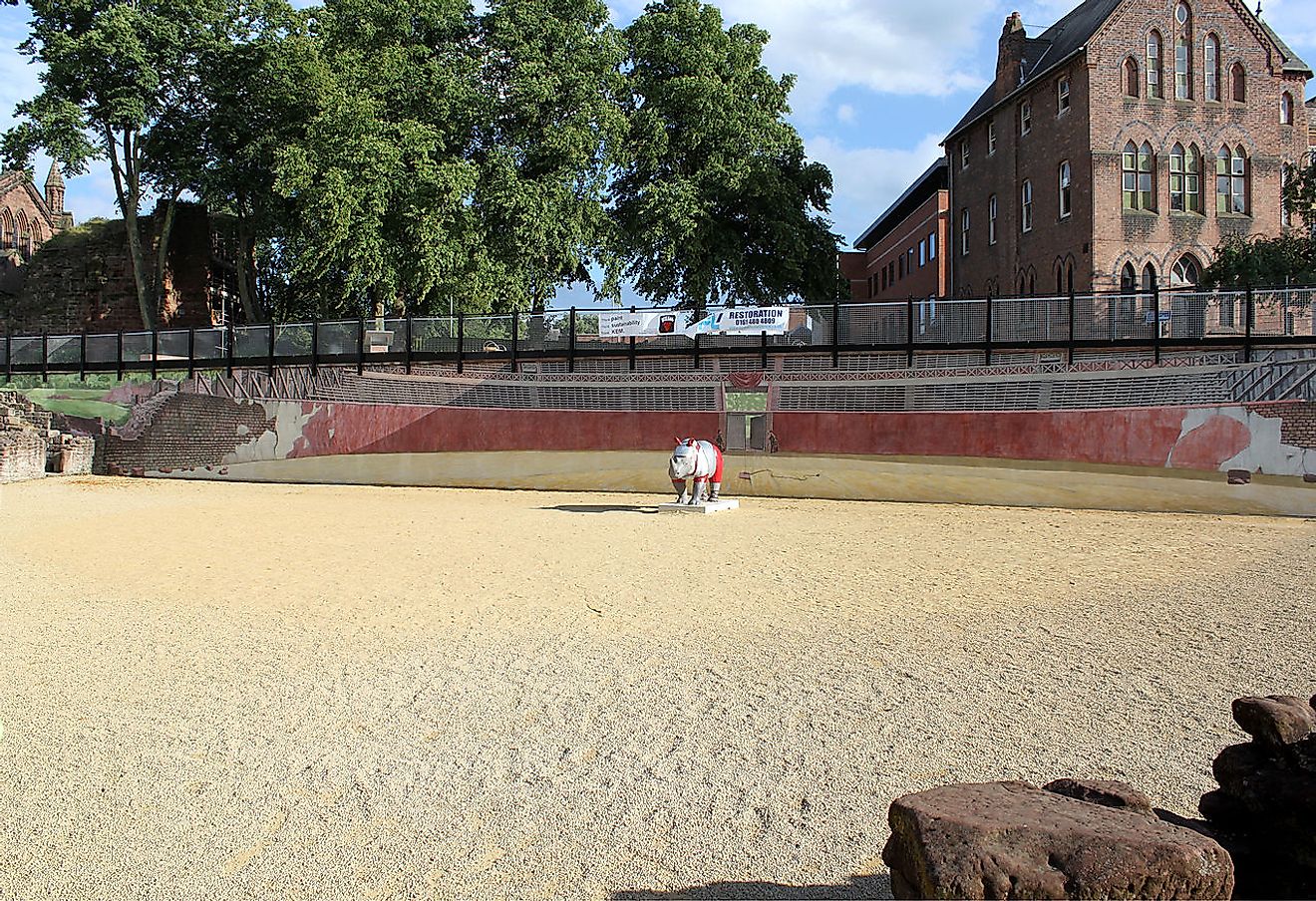
It was the largest Roman amphitheater in all of Britain and was used by the Romans for military weapons training and entertainment. Constructed in the 1st century, the oval amphitheater, at least the part that’s been excavated, features two entrances used by performers upon entering the arena. There’s also an altar dedicated to the goddess Nemesis, believed to control the fate of performers including gladiators. The entire amphitheater, based on calculations by archeologists, could have held up to 8,000 spectators.











